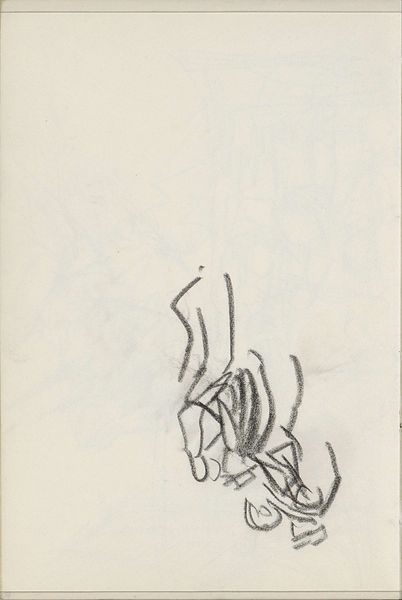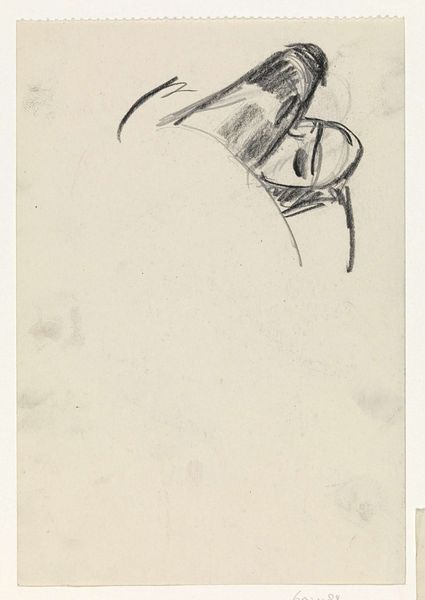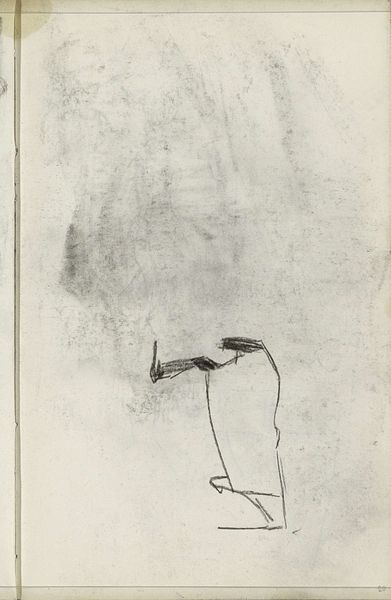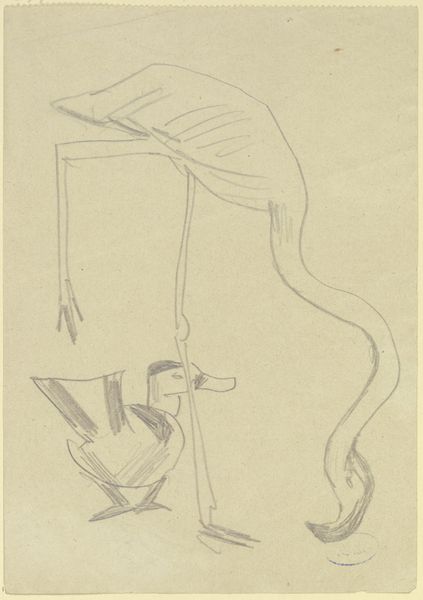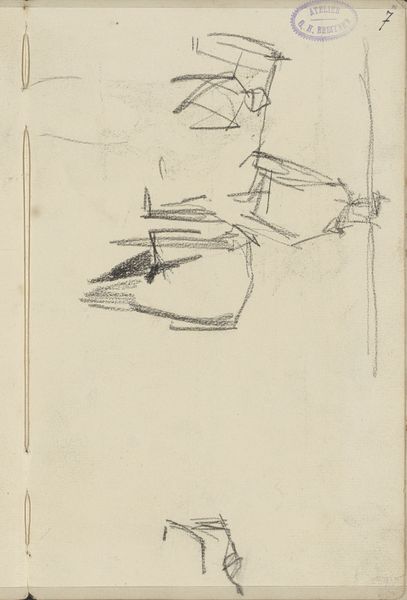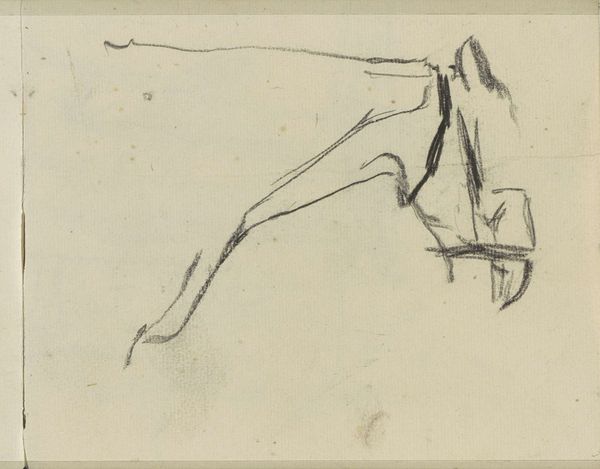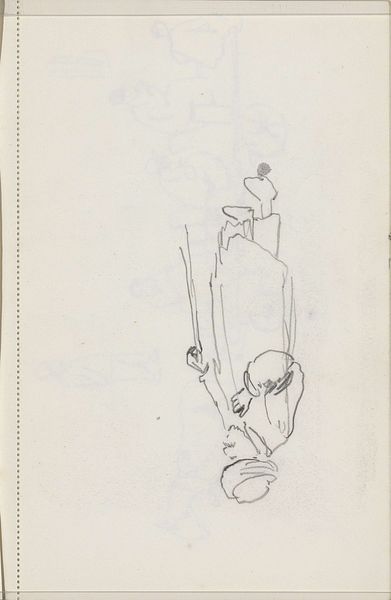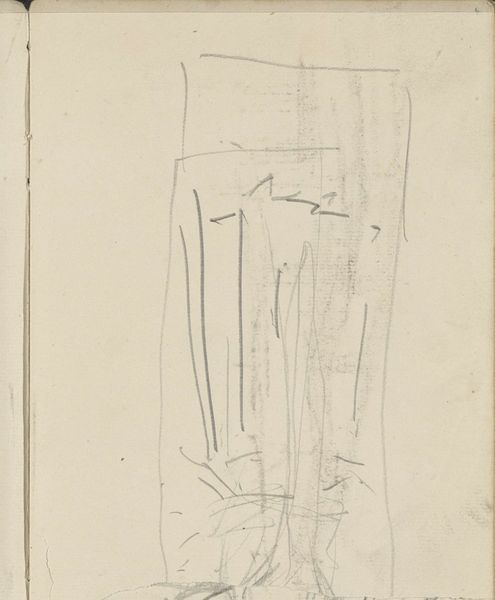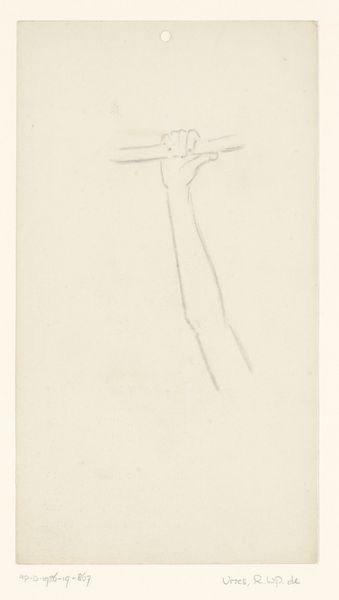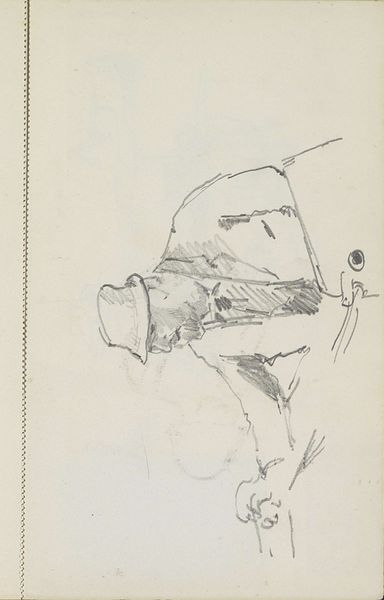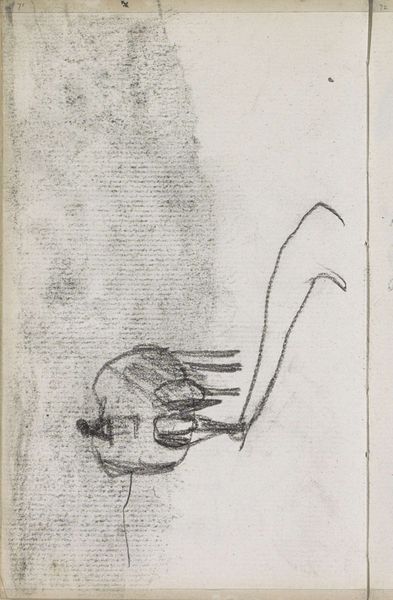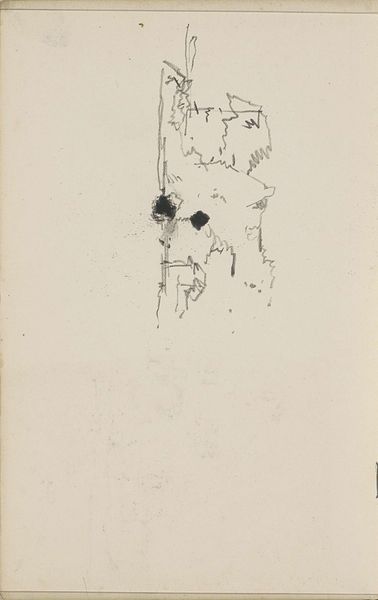
drawing, ink
#
drawing
#
dutch-golden-age
#
figuration
#
ink
#
line
Copyright: Rijks Museum: Open Domain
Curator: This is a pen and ink drawing entitled "Tafel" by Cornelis Vreedenburgh, made sometime between 1890 and 1946. It resides here at the Rijksmuseum. Editor: My immediate response is how simple and direct the lines are, but despite its austerity, there’s still this incredible formality suggested in the composition of what seems to be just a basic object. Curator: Indeed. Thinking materially, this deceptively simple line drawing actually demands quite a lot of attention to its production. The controlled variation of line weight achievable with pen and ink, that subtle contrast—it speaks to the artist's skilled handling of a fairly unforgiving medium. Editor: How do you see this relating to the social and historical context? Do we know why Vreedenburgh created it, or what its original function was? Curator: Precisely, let's contextualize this drawing in the culture that shaped it. The relative simplicity makes me think this was perhaps preparatory; a quick study focusing on form. While Vreedenburgh is primarily known for landscapes, domestic scenes like this played an important role in depicting everyday life. What were the artistic conventions he worked within? How does it compare to other drawings from that period at this museum? Editor: The sparse composition forces us to focus on the essence of… well, what exactly *is* it? Some kind of decorative bracket, perhaps? It's hard to tell exactly what part of the object this is, which in turn draws attention to how art often selects and abstracts from reality. Its function now is purely aesthetic and is something we see here, in the collection of this museum. Curator: A testament to art's role in transforming ordinary objects into objects of contemplation and, perhaps, a point of inquiry into the conditions of production. Editor: Right, it definitely prompts you to consider the value that both the artist and institutions ascribe to simple artifacts and raw materials through both representation and preservation. It is an exercise to consider this piece within Dutch society at that time. Curator: Well said. It's been fascinating to delve into such a simple-looking drawing, but so rich with cultural meaning and creative labor. Editor: I agree; who knew a few lines of ink could reveal so much about the art, institutions, and materials that helped shaped our view of domestic history?
Comments
No comments
Be the first to comment and join the conversation on the ultimate creative platform.
